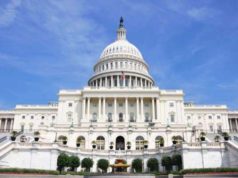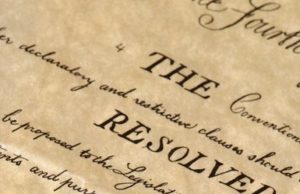
The United States is often thought of as a federal system of government, where power is divided between the national government and the individual states. However, there are some elements of a unitary system of government present in the United States. Here’s what you should know about the unitary system in the US:
First, it’s important to define what a unitary system is. In a unitary system of government, power is concentrated in the hands of a central government. Local or regional governments have limited power and are subordinate to the central government. In contrast, in a federal system of government, power is divided between a central government and regional governments, each with their own areas of authority.
In the United States, the Constitution grants certain powers to the national government. These powers are listed in Article I, Section 8 of the Constitution and are known as the “enumerated powers.” They include the power to regulate commerce, to raise and support armies, and to establish post offices and post roads, among others.
Additionally, the Supremacy Clause of the Constitution establishes that federal law takes precedence over state law when there is a conflict between the two. This means that the federal government has the power to overrule state governments in certain cases, such as when a state law is found to be in violation of the Constitution.
Another example of the unitary system in the US is the power of the President to issue executive orders. Executive orders are directives issued by the President that have the force of law. They can be used to direct federal agencies, establish policies, and implement laws passed by Congress. While executive orders are subject to judicial review, they can have a significant impact on the actions of both the federal government and state governments.
Lastly, the US also has a strong military and a national system of defense that falls under the authority of the federal government. The US military is responsible for national security and is controlled by the President as the Commander-in-Chief. While state National Guard units can be called up in times of emergency, their ultimate authority rests with the federal government.
Overall, while the US is primarily a federal system of government, there are elements of a unitary system present in the country. These include the enumerated powers of the federal government, the Supremacy Clause of the Constitution, the power of the President to issue executive orders, and the national system of defense.
The concept of a bicameral legislature has its foundations as early as Ancient Greece and Rome. Though a more modern application of bicameral legislature is most evident in medieval Europe, when two houses composed of the aristocrats and the commoners were developed for the representation of the estates within a realm.
The essential purpose of a bicameral legislature was to provide for representation of both the people or citizens of a nation and the collective states or provinces in the government system. The representation of both factions in one body of legislature is to provide for a method of passing legislation or laws by requiring a majority for approval. This concurrent majority provides for the ability to pass or approving legislature that is not one-sided or favoring a particular faction in a distinct fashion.
The United States bicameral legislature, or Congress, is often cited as a prime example of bicameralism. However, there are different types of bicameral legislature employed by different governments throughout the world. The Federal bicameral system is the one that is most commonly associated with the integral concept of bicameral legislation. The United States, Mexico, Australia, Canada, Germany, and the European Union all employ a bicameral system. However, the method or structure in which it is put into effect varies from country to country.
A version of a bicameral legislature that is considered as the classical structure is one that consists of having two Houses in which the democratic process and the federalism principle are combined in the sense of representation. The Lower House is comprised of members based upon population numbers of each State or province, which are elected by the citizens of each State. The Upper House is comprised of an equal number of representatives from each State and is chosen by State legislatures.
The United States Congress, as well as Mexico and Australia, employ this particular bicameral system. However, the United States proves to be a unique example for it was in 1913 that the17th Amendment was approved in which Senators would now be elected by popular vote rather than State legislature appointments. Another form of a bicameral legislature is the Aristocratic system. This system is usually derived from governmental precedence existing in previous provisions. The most notable example is the British House of Lords.
The House of Lords is represented by a number of individuals who assume their position due to inheritance of nobility titles. The House of Commons, the second faction in the bicameral system, is one that is subject to an election to fill the positions. However, the positions held through inheritance have been limited to 92 from 700 due to recently enacted legislation.
The Unitary system of bicameral legislature has no ties to either a federal government or to aristocratic positions. A unitary state is one that is governed through sovereignty, in which the federal or central government can only exercise certain powers over them. A bicameral system in unitary states, such as Japan, Italy, France, the Czech Republic, and the Netherlands, have different functions than those created under a federal bicameral legislature. One example could include where the Upper House only has the power or authority or litigating and vetoing decisions rendered by the Lower House.
Regarding the various types of bicameral the legislature, the United States Congress proves to be one of a kind, in which the strict dichotomy is enforced between a democratic ideal and the Federal institution of government. Even though the Senate is now elected by a popular vote, Congress still maintains a balance between both factions.





















